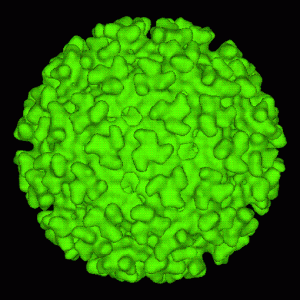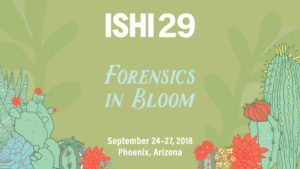
The keynote speaker for this year’s International Symposium on Human Identification (ISHI), Andrew Hessle, describes himself as a catalyst for big projects and ideas (1). In biology, catalysts are enzymes that alter the microenvironment and lower the energy of activation so that a chemical reaction that would proceed anyway happens at a much faster rate—making a reaction actually useful to the biological system in which it occurs.
In practical terms, Andrew Hessel is the person who helps us over our inertia. Instead of waiting for someone else, he sees a problem, gathers an interested group of people with diverse skills and perspectives, creates a microenvironment for these people to interact, and runs with them straight toward the problem. Boom. Reaction started.
One of the problems he has set his mind toward is that of cancer drug development. In a TED talk presented in 2014, he describes the current state of pharma drug development and the problem with the model of looking for the next big blockbuster drug, which he describes as unsustainable, and he presents a compelling argument for his viewpoint.
Instead he asks “what if” regarding drug development. Can you have a non-profit, open-science drug development model to produce individually targeted drugs without mass-marketing? To this end he and others incorporated the Pink Army Cooperative. Cooperatives are a business model in which people form a business to help meet a shared need. The mission of Pink Army: make the best cancer medicines possible and give them away to the patients.
The model of making drugs one person at a time greatly simplifies drug development. For one thing, manufacturing is small scale. Secondly, no animal testing or phased clinical trials are required, because you only test the drugs on the patient’s own cells in culture. Does it kill the cancer cells while leaving normal cells alone? If yes, you have a viable treatment. If no, try another design. This makes drug development cheaper and faster, and still safe—because with a cell-based or 3D culture assay you can test for all of the toxicities and viability effects that you need to, and cell-based assays are highly predictive.
The biggest question that remained is what kind of drug could you design on a person-by-person basis? The answer was: oncolytic virus. Oncolytic (literally “cancer breaking”) viruses are weakened viruses that are unable to replicate and lyse normal cells because normal cells have their antiviral protection mechanisms intact. However, many cancer cells have lost the ability to protect against infection by weak viruses, and the weakened viruses can replicate and lyse cancer cells.
Turning to the emerging and burgeoning field of synthetic biology, which has grown as the human genome project has been completed and we begin our analysis of genomes of all kinds of organisms that we can now “read”, Hessel’s idea is to use the laptop (not the laboratory) to synthesize the genome of oncolytic viruses that are designed to specifically designed to infect an lyse an individual’s tumor cells. Since cancer is in reality a genetic disease and all cancers are different, a synthetic biology approach, like such, would be a truly targeted, and likely effective way to treat cancer.
To accomplish this synthetic anti-tumor virus design, Hessel has enlisted the help of the software engineers at AutoDesk and the 3D printing technology. Design the genome of the virus on the computer. Print it. Test it on the patient’s cells. Treat.
The first tests in animals will look at treating canine cancers. Then after proof of concept there, look at humans.
This isn’t the only arena where Hessel is headed though. He is also looking at synthesizing human genomes for human cells to see what problems might be solved with larger scale synthetic biology through the gp-write project.
He acknowledges that there are ethical questions raised by all of this technology, and that some people aren’t going to like what he is doing. That’s okay, though. He’s not just catalyzing the projects: He’s catalyzing the discussion. We need that too.
 To learn more about ISHI, register for the conference or submit a question for Hessel’s talk, please visit www.ISHInews.com
To learn more about ISHI, register for the conference or submit a question for Hessel’s talk, please visit www.ISHInews.com
References Cited
- Kotler, S. (2018) The human operating system gets an overhaul. NEO.LIFE [Internet: https://medium.com/neodotlife/andrew-hessel-human-genome-project-write-d15580dd0885 Accessed: May 17, 2018]
- Hessel, A. (2014) TEDx Danubia [Internet: https://www.youtube.com/watch?v=Zctk6MZaxMk Accessed: May 17, 2018]
Michele Arduengo
Latest posts by Michele Arduengo (see all)
- An Unexpected Role for RNA Methylation in Mitosis Leads to New Understanding of Neurodevelopmental Disorders - March 27, 2025
- Unlocking the Secrets of ADP-Ribosylation with Arg-C Ultra Protease, a Key Enzyme for Studying Ester-Linked Protein Modifications - November 13, 2024
- Exploring the Respiratory Virus Landscape: Pre-Pandemic Data and Pandemic Preparedness - October 29, 2024
